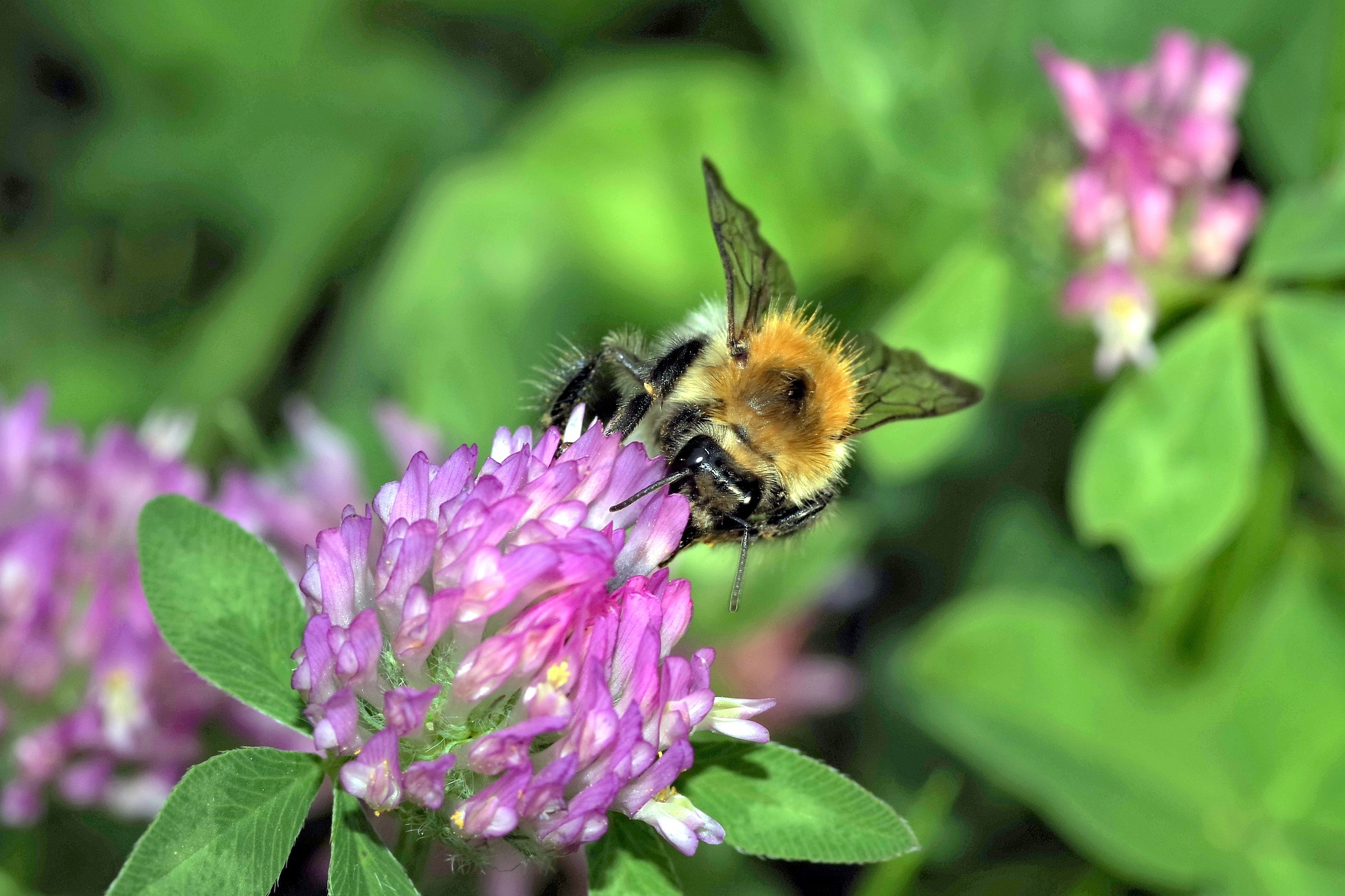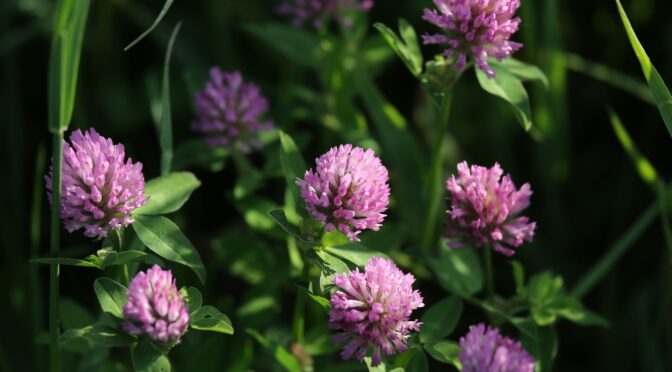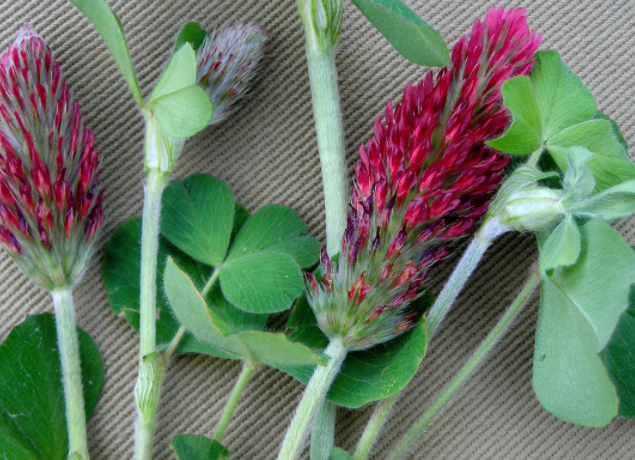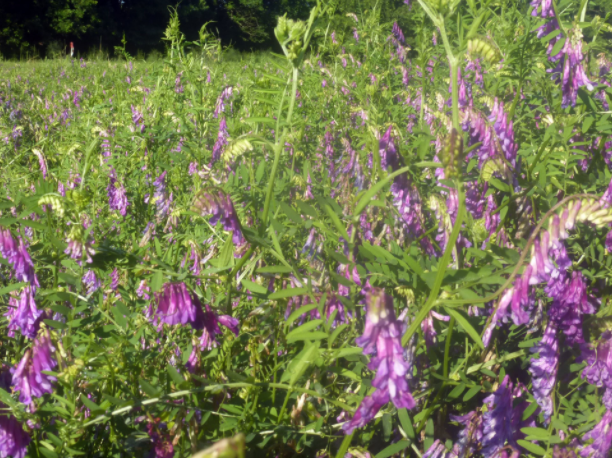Red clover (Trifolium pratense) is an herbaceous biennial plant native to Europe that has naturalized throughout North America. While some consider red clover a weed, herbalists, and gardeners recognize its value. This beautiful plant is excellent for soil and human health. Here are some of the reasons we’re big fans of red clover and how we use it.
Red Clover as a Cover Crop
Red clover is a nitrogen-fixing cover crop. It’s an excellent choice for adding green manure to build up soils and a good nectar source for some pollinators. You can sow it in fallow fields, pathways, and small openings to help suppress weeds.
You can sow red clover in early spring, late summer, or fall as a winter cover crop. It can be a little slow to establish, so sow clovers at least 40 days before your average first frost.
Consider using buckwheat as a nurse crop if you’re sowing red clover during the hotter months. The clover will grow slowly under the buckwheat until fall frost kills the buckwheat, allowing the clover to establish quickly without the need for fall tilling.
Red Clover in Herbal Medicine
I’m not a doctor. This article is for informational purposes only. Consult a physician or clinical herbalist before using herbal remedies to treat any condition.
Herbalists have used red clover for centuries to treat a wide range of conditions, from menopause to whooping cough. Many of its uses revolved around female health. Modern science is beginning to explore the properties of plants, including red clover. While further research is needed, red clover tea and tincture may have a few potential benefits.
Benefits of Red Clover
- Red clover contains phytoestrogens, which can mimic estrogen in the body.
- Red clover may reduce osteoarthritis symptoms related to menopause. A 2015 study of 60 women found that taking red clover extract over 12 weeks reduced bone mineral density loss in the spine.
- In another study of 109 postmenopausal women, participants reported skin and hair texture improvements after taking red clover extract for 90 days.
Further research is needed in all of these cases. Don’t use red clover if you have a hormone-sensitive condition like breast cancer.
Harvesting and Using Red Clover
Beyond its health benefits, red clover is also just an enjoyable herb to use. Both the leaves and the flowers are edible. Some of you may remember pulling the pink blossoms from the flowerhead and eating them as a kid.
The leaves, which have a mild bean-like flavor, can be added to salads. The blossoms, which are sweet, can be used in tea, baked goods, or salads. It’s best to break them up or pull the tubular flowers from the flowerhead, as whole flowerheads can be dry and tough to chew.
Harvest leaves and flowers that look fresh and are free from dried, brown spots. Remember to leave some blooms for the pollinators, especially if you’re harvesting from wild patches.
 Red Clover Tea
Red Clover Tea
Making red clover tea is simple: Pour about 2 cups of boiling water over about 1/4 to 1/2 cup of fresh or dried red clover blossoms and let it steep for 10 to 15 minutes. You can also let it cool and pour it over ice to make a fun summertime herbal iced tea.
Red clover mixes well with other flavors. Feel free to experiment with adding lemon balm, mint, white clover, chamomile, or orange slices to the mix and sweeten with honey or maple syrup to taste.
Red Clover Tincture
Using the folk method, you can make a basic red clover tincture with fresh or dried red clover blossoms. All you need is a few simple ingredients and some patience.
You simply place the blossoms in a glass jar and cover them with 80-proof alcohol. Then, keep the tincture somewhere dark for 2 to 6 weeks, shaking it once a day. After this period, you can strain it and begin using it.
Be sure to check out our complete instructions for Folk Method Tinctures.
Red clover is a fun herb to grow and use. Try growing it as a cover crop in your garden this season and enjoy its many soil health, culinary, and herbal benefits.



